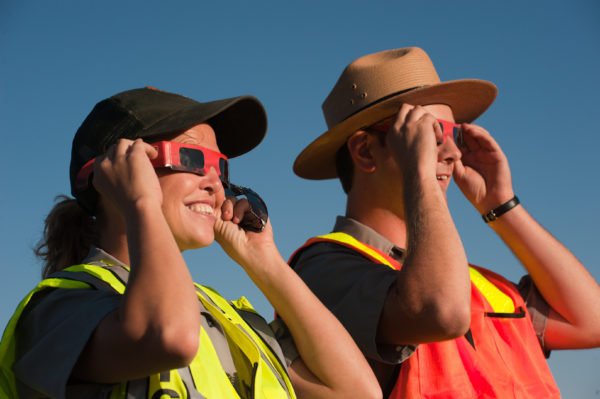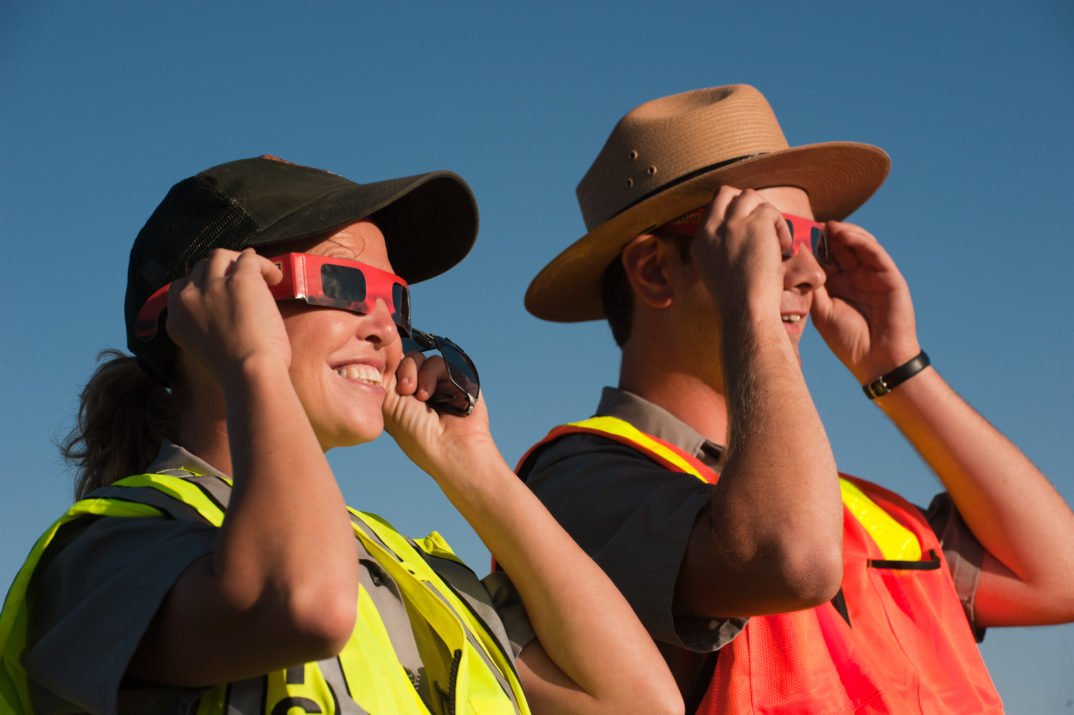Watching a total solar eclipse is a rare and memorable experience. However, without the right precautions, it can also be dangerous.
The Sun’s rays are so intense you can feel their warmth from 150 million km away. That’s why looking at the Sun directly, even for a few seconds, can seriously damage your eyes. It allows ultraviolet (UV) light to flood in and burn the light-sensitive cells – causing potentially permanent blurry vision and blind spots.
Watching an eclipse with normal sunglasses provides virtually no protection. In fact, they trick your eyes to let in more light, so they can cause even more damage. But there are three easy ways to view an eclipse safely that can be set up in a few minutes.
Build a pinhole projector
The safest way to view a solar eclipse is to project it onto a piece of paper. Using a cardboard box, you can make a pinhole projector.
You will need:
A long cardboard box, a sheet of white paper, some aluminum foil, a craft knife, scissors, a drawing pin, duct tape and glue. If you can’t find a long box then try taping two smaller boxes together.
Safety measures:
Remember: DO NOT look directly at the Sun without appropriate protection, such as special eclipse glasses. Children should get an adult to help build and use this projector. Take extra care when using sharp tools like craft knifes and scissors.
What will you see?
A bright beam of sunlight will project onto the paper at the far end of the box. This is the Sun’s disc. When an eclipse occurs you’ll see an image of the Moon’s disc sweeping across your projection. The size of the image will be about one hundredth of the length of the box – so the longer the box, the bigger the projected image.

Using binoculars safely
Pinhole viewers are cheap and easy to make. However, with a bit more time you can get a much better image by projecting the Sun with binoculars. The advantage of this method is that you can watch the eclipse with others as the projected image is much bigger.
You will need:
A pair of large binoculars (a telescope works just as well), a tripod (or another sturdy object you can securely fix the binoculars to), a sheet of white paper, a large piece of cardboard, scissors, some duct tape and some large plain paper or a flip-chart.
Safety measures:
Binoculars and telescopes concentrate sunlight, so never directly look at the Sun with them, as you will permanently damage your eyes. Don’t look directly at the Sun without appropriate protection, such as special eclipse glasses. Keep the binoculars lenses covered until you are ready to use them as this will avoid them getting hot. Children should get an adult to help build and use this projector. Take extra care when using sharp tools like scissors.
What will you see?
As sunlight shines through the binoculars, an image of the Sun will be projected onto your flip-chart. Adjust the distance between the binoculars and the flip-chart until your image is about the size of a small plate. If it’s blurry, focus your binoculars until it becomes sharp. While you wait for the eclipse to happen, look out for dark specks and patterns in your projection – these are sunspots.
Looking directly at the Sun
Watching an eclipse directly is possible – but it’s vital to protect your eyes with the correct equipment.
Never look at the Sun unless you are wearing a pair of special eclipse glasses. Check they meet required safety standards.
Test their condition by putting them on as you’re looking away from the Sun. You shouldn’t be able to see anything. If any light is entering through the glasses, this could mean that they are scratched and won’t provide the right protection. When you’re satisfied the glasses aren’t damaged, turn to look at the Sun. This should be the only thing you can see – a big, orange globe surrounded by a black sky.
Don’t look at the Sun through a pair of binoculars or a camera, as they will concentrate the Sun’s powerful rays into your eye. If you want to use equipment like this, you need a professional solar filter that fits tightly onto the front lenses.
